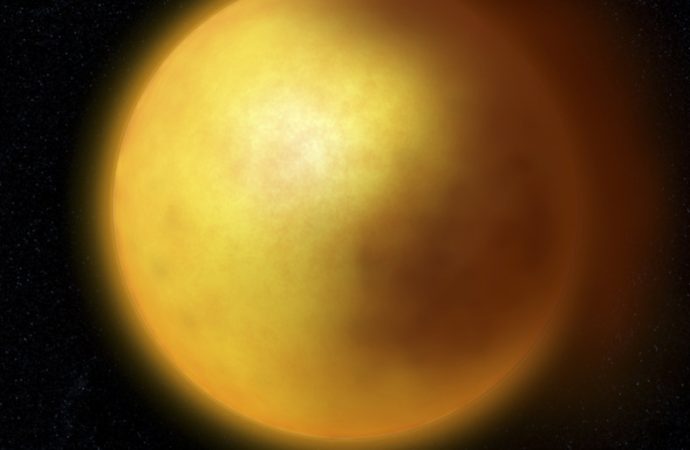Twenty-three new objects have been added to the growing collection of stars observed to have unusual dips in their light curves. A recent study examines these stars and the potential causes of their strange behavior.
An Influx of Data
The primary Kepler mission provided light curves for over 100,000 stars, and its continuation K2 is observing another 20,000 stars every three months. As we enter an era where these enormous photometric data sets become commonplace — Gaia will obtain photometry for millions of stars, and LSST billions — it’s crucial that we understand the different categories of variability observed in these stars.

The authors find three different types of light curves among their 23 unusual stars. Scallop-shell curves (top) show many undulations; persistent flux-dip class curves (middle) have discrete triangularly shaped flux dips; transient, narrow dip class curves (bottom) have only one dip that is variable in depth. The authors speculate a common cause for the scallop-shell and persistent flux-dip stars, and a different cause for the transient flux-dip stars. [Stauffer et al. 2017]
After filtering out the stars with planets, those in binary systems, those with circumstellar disks, and those with starspots, a number of oddities remain: a menagerie of stars with periodic variability that can’t be accounted for in these categories. Some of these stars are now famous (for instance, Boyajian’s star); some are lesser known. But by continuing to build up this sample of stars with unusual light curves, we have a better chance of understanding the sources of variability.
Building the Menagerie
To this end, a team of scientists led by John Stauffer (Spitzer Science Center at Caltech) has recently hunted for more additions to this sample in the K2 data set. In particular, they searched through the light curves from stars in the ρ Oph and Upper Scorpius star-forming region — a data set that makes up the largest collection of high-quality light curves for low-mass, pre-main-sequence stars ever obtained.
In these light curves, Stauffer and collaborators found a set of 23 very low-mass, mid-to-late-type M dwarfs with unusual variability in their light curves. The variability is consistent with the stars’ rotation period where measured — which suggests that whatever causes the dips in the light curve, it’s orbiting at the same rate as the star spins.
Causes of Variability?

These plots show how the properties of these 23 stars compare to those of the rest of the stars in their cluster (click for a closer look!). For all but the rotation rate, they are typical. But the stars with scallop-shaped light curves have among the shortest periods in Upper Sco, with some near the theoretical break-up for stars of their age. [Stauffer et al. 2017]
The authors categorize the 23 stars into two main groups.
- The first group consists of 19 stars with short periods; more than half of them rotate within a factor of two of their predicted breakup period! Many of these show sudden changes in their light-curve morphology, often after a stellar flare. The authors propose that the variability in these light curves might be caused by warm coronal gas clouds that are organized into a structured toroidal shape around the star.
- The second group consists of the remaining four stars, which have slightly longer periods. The light curves show a single short-duration flux dip — with highly variable depth and shape — superposed on normal, spotted-star light curves. The authors’ best guess for these four stars is that there are clouds of dusty debris circling the star, possibly orbiting a close-in planet or resulting from a recent collisional event.
Stauffer and collaborators are currently developing more detailed models for these stars based on the possible variability scenarios. The next step, they state, is to determine if the gas in these structures have properties necessary to generate the light-curve features we see.
Source: AAS Nova
































Leave a Comment
You must be logged in to post a comment.